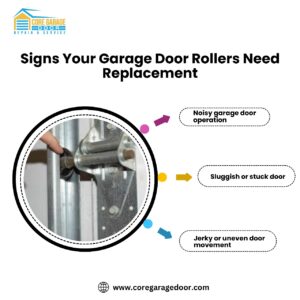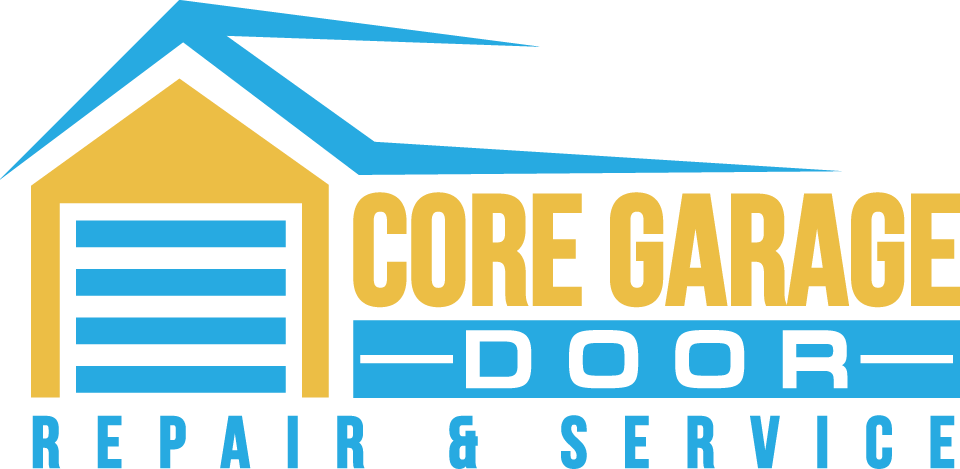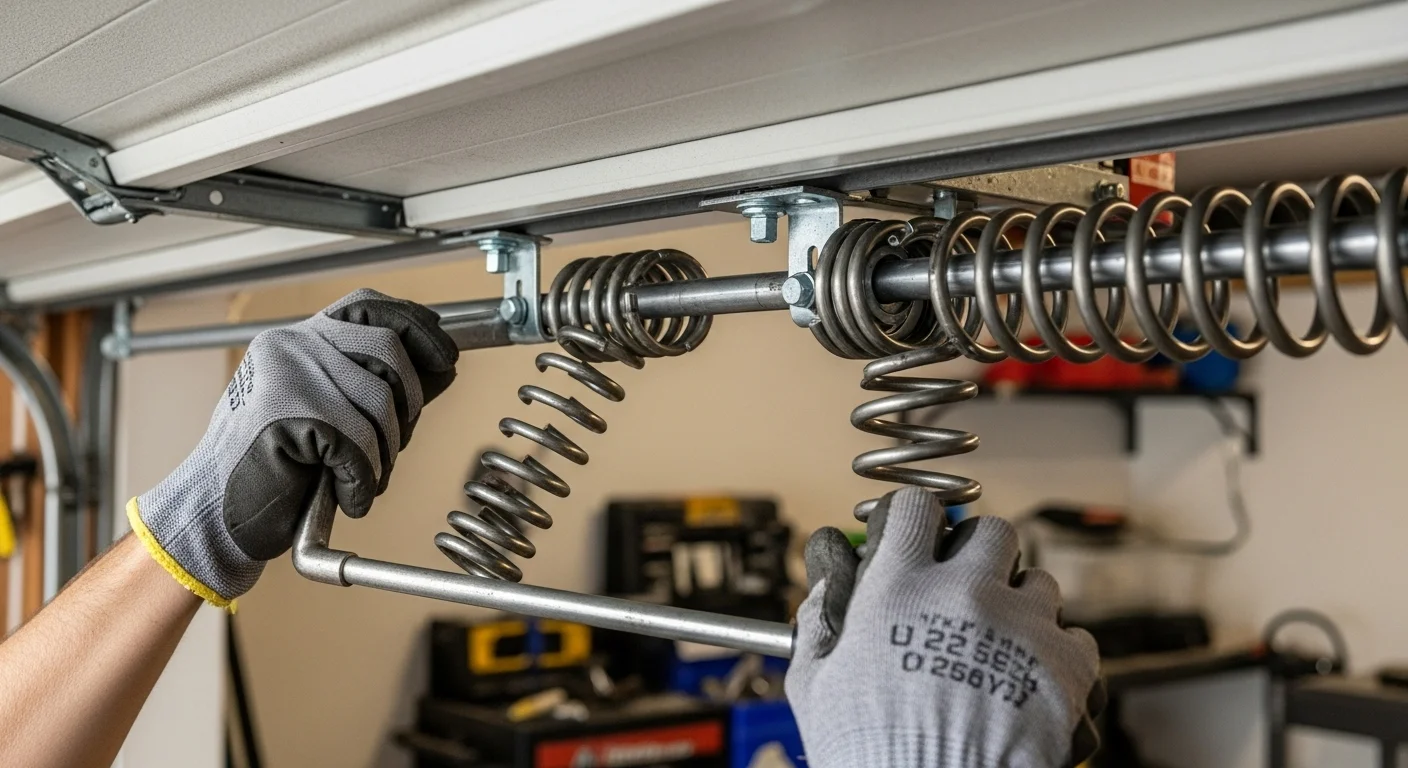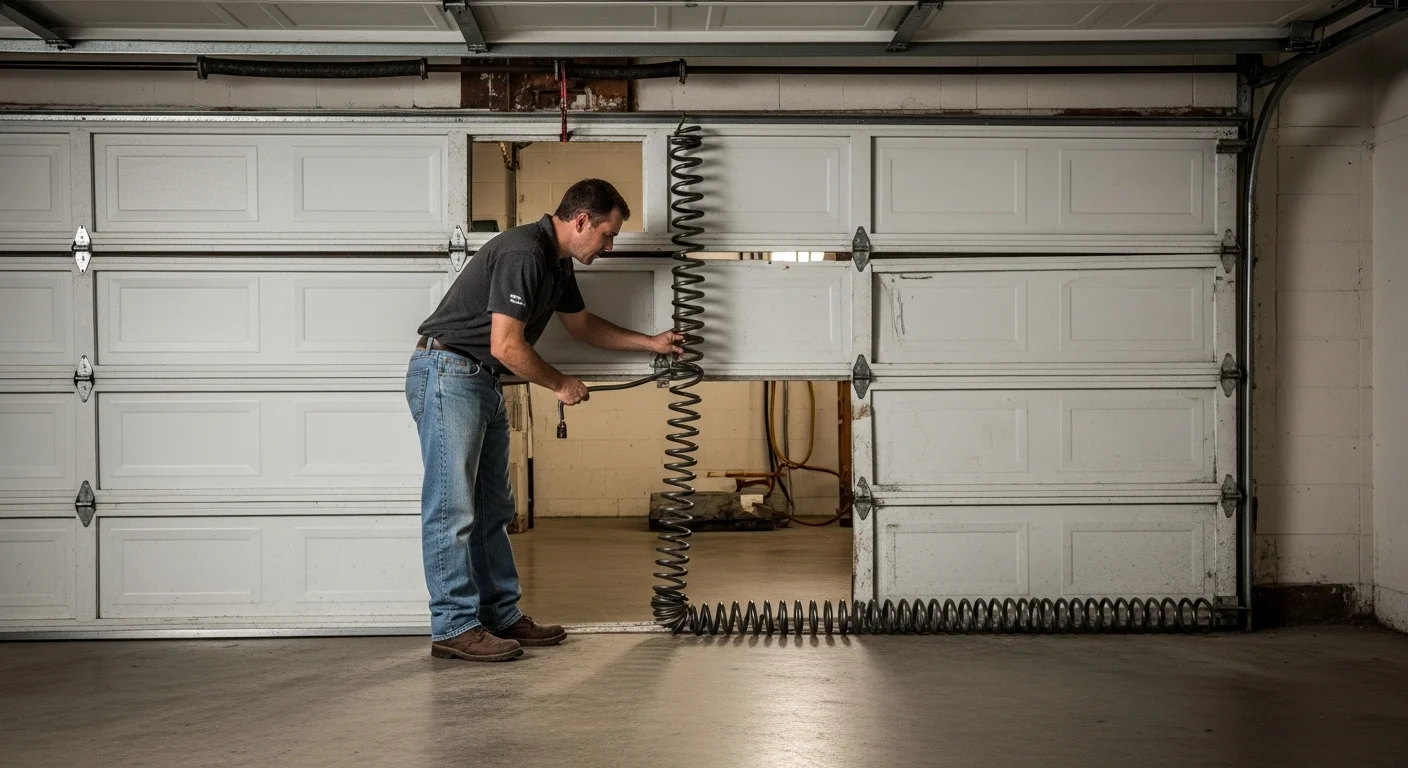How to Replace and Repair Garage Door Rollers | Expert Guide
Garage door rollers are essential components in ensuring the smooth operation of your garage door. Over time, these rollers can wear out, become noisy, or stop working entirely, leading to inconvenient and even hazardous garage door malfunctions. This detailed guide will walk you through garage door roller replacement, maintenance, and repair, providing a comprehensive solution to keep your garage door in optimal working condition.
Understanding Garage Door Rollers and Their Role
Garage door rollers are small but critical parts of your garage door system, enabling the door to move up and down along the tracks. These rollers bear significant weight, which, combined with regular use, causes wear over time. Proper understanding of their function helps homeowners assess when garage door parts replacement is necessary.
What Are Garage Door Rollers?

Garage door rollers are attached to the door, sliding within the metal tracks to guide the door’s movement. These rollers typically come in various materials, such as steel, nylon, or plastic. Each material offers a different level of durability, with nylon rollers often preferred for their quieter operation and smoother glide.
Rollers work in tandem with the springs and tracks, and any malfunction in the rollers affects the entire system, including alignment and balance.
Why Do Garage Door Rollers Break?
Over time, your garage door rollers can wear out due to factors such as:
- Normal wear and tear: Frequent use of the garage door leads to gradual degradation of the rollers.
- Lack of lubrication: If rollers are not properly lubricated, friction increases, leading to faster deterioration.
- Exposure to elements: Rollers exposed to extreme weather conditions may develop rust, especially if they are made of metal.
Inadequate maintenance leads to noise, jerky motions, and, eventually, broken rollers. Lubricating garage door rollers regularly is key to their longevity.
Signs Your Garage Door Rollers Need Replacement

It’s crucial to recognize the early signs that your garage door rollers repair is necessary to avoid bigger, costlier issues later. Here are common warning signs:
- Noisy garage door operation: A grinding or screeching sound usually indicates that the rollers are worn out or lacking lubrication. To fix a noisy garage door roller, you may need to lubricate the rollers or replace them entirely.
- Jerky or uneven door movement: If your garage door is shaking or not moving smoothly, the rollers could be misaligned or damaged.
- Sluggish or stuck door: A garage door that struggles to open or gets stuck partway through the process is another sign that roller replacement may be necessary.
Step-by-Step Guide: How to Replace Garage Door Rollers
Safety First: Precautions to Take Before Starting
Before attempting any garage door roller replacement, it’s critical to prioritize safety. Garage doors are heavy, and mishandling them could result in injury or damage to the door itself.
- Unplug the garage door opener: Disconnect the power to prevent accidental door activation during the repair.
- Wear protective gear: Safety goggles and gloves are essential to protect your hands and eyes while working on the rollers.
- Check the door springs: Ensure that the door’s springs are in good condition. If they are damaged or under extreme tension, call a professional before proceeding.
Best Tools to Replace Garage Door Rollers

To successfully replace garage door rollers, you will need specific tools such as:
- Wrenches and pliers: For loosening and tightening nuts and bolts.
- Clamps: To hold the garage door in place while you work.
- New rollers: Choose rollers made of durable materials, such as nylon, for longevity.
Using the best tools to replace garage door rollers ensures a smoother and more efficient replacement process.
How to Replace Garage Door Rollers: A DIY Guide
Step-by-Step Garage Door Roller Replacement Guide
- Prepare the Door: Secure the garage door using clamps on the tracks to prevent it from moving during the roller replacement process.
- Remove Old Rollers: Use a wrench to loosen the bolts holding the roller brackets in place. Carefully remove the old rollers from the door.
- Install New Rollers: Insert the new rollers into the brackets, ensuring they are aligned properly with the track.
- Test the Door: After replacing the rollers, carefully test the door’s movement to ensure it opens and closes smoothly without jerky motions or unusual sounds.
By following this step-by-step garage door roller replacement guide, you can safely replace garage door rollers without a professional, saving time and money on repair services.
Garage Roller Repair Cost and When to Call a Professional
How Much Does Garage Roller Replacement Cost?

The cost of garage roller repair can vary depending on factors such as roller type (nylon, steel), labor costs, and whether additional repairs (like track or spring replacement) are needed. On average, homeowners can expect to pay between $100 to $200 for professional roller replacement.
If you choose to handle the replacement yourself, garage roller repair cost will only include the price of the rollers, which can range from $10 to $50 per roller depending on the material.
When to Call a Professional
While many homeowners can handle basic roller replacement, more complex issues, such as misaligned tracks, damaged springs, or motor malfunctions, may require professional help. If you’re unsure about the condition of your garage door or lack the tools for a safe replacement, calling a professional is the best option.
Garage Door Roller Maintenance Tips for Longevity
Lubrication and Regular Inspection
Regular garage door roller maintenance is essential to avoid the need for frequent repairs. Lubricate the rollers, hinges, and tracks every six months to keep the system running smoothly and prevent wear. In addition, inspect the rollers for signs of wear and replace them as needed to avoid larger issues down the line.
Garage Roller Replacement Safety Tips
When working on your garage door, follow these safety precautions:
- Ensure the door is securely clamped before removing any components.
- Always wear gloves to avoid injury from sharp metal parts.
- Regularly inspect the garage door spring and roller replacement to ensure the door remains balanced and functional.
Conclusion
Proper garage door roller insulation, regular maintenance, and timely repairs are key to ensuring the long-term performance of your garage door. By following this expert guide, you can address common garage door problems effectively, saving both time and money while extending the life of your garage door system.
FAQs
How do I know if my garage door rollers need replacing?
You need to replace your garage door rollers if they are noisy, cause jerky door movement, or appear visibly worn or broken. Noisy rollers, difficulty in opening or closing the door smoothly, or seeing visible damage (such as cracks or rust) on the rollers are clear signs they need replacement. Ignoring these symptoms can lead to further damage to the garage door system.
Can I replace garage door rollers myself?
Yes, you can replace garage door rollers yourself with the right tools and safety precautions, but it can be dangerous. Replacing garage door rollers is a DIY task if you’re familiar with basic tools and follow safety steps, such as unplugging the garage door opener. However, working with heavy doors and tension springs requires caution. Consider hiring a professional if unsure.
How much does it cost to replace garage door rollers?
Replacing garage door rollers typically costs between $100 and $200, depending on the roller type and labor charges.
The cost includes the price of new rollers and any professional service fees if you’re not doing the repair yourself. High-quality rollers, such as nylon, may cost more than standard metal ones.
What are the best tools to replace garage door rollers?
The best tools to replace garage door rollers include pliers, a socket wrench, a flathead screwdriver, and safety gloves. These tools help safely remove the old rollers and install the new ones. Always use protective gear, such as gloves and safety glasses, to prevent injuries.
How often should I lubricate garage door rollers?
You should lubricate garage door rollers every six months to ensure smooth operation. Regular lubrication reduces friction, prolongs the life of the rollers, and prevents wear and tear. Use a silicone-based lubricant for best results.
Why is my garage door making a grinding noise?
A grinding noise is usually caused by worn-out rollers or a misaligned track. Noisy operation often indicates that the rollers are damaged or the track is not properly aligned, causing friction. Replacing or repairing the rollers and checking the alignment can fix the issue.
Can I replace just one roller, or should I replace all of them?
It’s recommended to replace all rollers at once for consistent performance. Even if only one roller is damaged, the others are likely worn out if they’ve been in use for a similar period. Replacing all rollers ensures smoother operation and prevents future issues.
How long do garage door rollers typically last?
Garage door rollers typically last 5 to 7 years, depending on material and usage. Nylon rollers tend to last longer than steel or plastic rollers, especially with regular lubrication and maintenance. High-cycle rollers may last up to 10 years or more.
Can worn-out rollers damage other parts of the garage door?
Yes, worn-out rollers can damage the tracks, springs, and opener. When rollers become worn or damaged, they can cause the door to move unevenly, leading to increased strain on other parts of the system, which can result in costly repairs or replacements.
Are nylon or steel garage door rollers better?
Nylon rollers are quieter and more durable, while steel rollers are stronger but noisier. Nylon rollers are typically preferred for residential use due to their smooth, quiet operation and longevity. Steel rollers, while durable, tend to be noisier and may require more maintenance.





